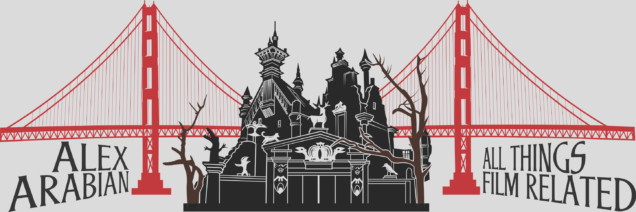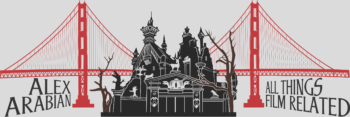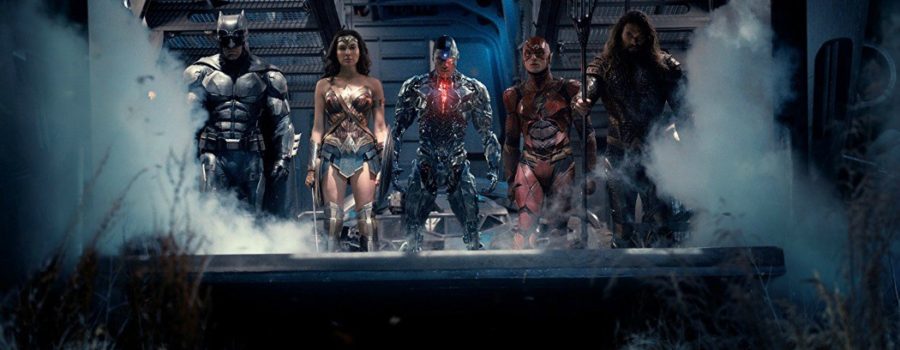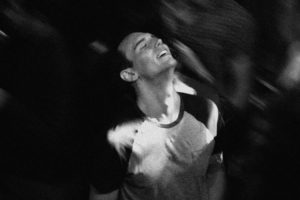[Published at Film Inquiry] Director Zack Snyder (Watchmen) poured his heart and soul into the making of Justice League, and it shows in every frame of the 159-minute film. Two hours may seem like a long length for a film, particularly an action film, however, Joss Whedon(The Avengers) and Chris Terrio (Argo) provide a fairly well-balanced script that doesn’t dull the senses too heavily. In fact, Justice League is a dialogue-driven film when it needs to be, and provides plenty of emotional depth required to elevate a film of this subject matter from mind-numbing popcorn spectacle to something greater. The dialogue doesn’t always land, but it’s apt enough to keep the audience involved. What a pleasant surprise it is, as well, to have Danny Elfman scoring another superhero film.
In this sequel, the world is a decidedly darker, more disarrayed place without Superman (Henry Cavill). It takes a little while for the film to come together as a whole, as one could expect (only two of these characters have had their own films in this cinematic universe), but when it does, it electrifyingly hits most of the right notes. Unlike what many superhero films have done in the past, there aren’t scenes filled with mass-destruction and unnecessary loss of innocent human life.
Of course there is a villain, and the world and humankind itself is at stake, but that threat alone is all that is needed to bring the long-dormant Justice League together again, this time on the silver screen. It’s a giant step in the right direction for DC’s superhero team-up films, which, apart from Wonder Woman, have struggled a bit, critically. With a well-chosen cast, applaudable cameos, an engrossing (albeit, at times, trite), self-aware script, and absolutely gorgeous visual effects, Snyder and the team have breathed new life into the Justice League characters and storyline.
Luscious Landscapes Throughout
Snyder has never lacked in providing breathtaking visuals. Viewers familiar with his work will notice the hyper-stylized slow motion, the closeups of bullets flying and shells bouncing off of the ground, and innovative camera movements. He’s a visual effects wizard, which he’s proven time and again. As he takes the viewer from city to city, country to country, the audience is exposed to a variety of landscapes whose beauty is heightened through his attention to detail and cinematographer Fabian Wagner’s lens.
We see more of Gotham than any of the previous films, and it’s closer to Tim Burton’s iteration than Christopher Nolan’s. Gotham has always been a gloomy city run by criminals, but with Superman dead, it seems that the criminals are more empowered than ever, with even petty thieves roaming the streets during the day without fear. It seems the Caped Crusader has bigger problems to tackle.

It’s occasionally somewhat difficult to follow along as Snyder takes the viewer from location to location, but the characters residing in them and some appropriate signage clarify it rather effectively. Snyder sprinkles Justice League with references to The Godfather, prior Superman and Batman films, and a multitude of comic book nods to please fans. Viewers get a first glimpse of Barry Allen, or The Flash’s hometown, Central City.
Again, with the death of Superman looming over the world like a dark cloud, Snyder and Wagner filter most locations through a dim perspective, sometimes to the film’s detriment, though rarely; this isn’t the Central City viewers may be familiar with in The CW’s The Flash. Though we don’t get to see much of Central City, it’s just enough to leave the viewer wanting to see more of this relatively unknown (on the big screen) city, and hopefully a slightly brighter version with the upcoming Joby Harold-penned (Edge Of Tomorrow) Flashpoint.
It’s a pleasure to see the archipelago of Themyscira again, as it’s the location that stands out the most amidst the darkness throughout Justice League, green pastures, beautiful blue ocean, and sunlight abound. Other locations include Iceland, Paris, Ukraine, and Atlantis. Yes, that last one is fictional, and Snyder gives us but a hint of the imaginative underwater city where Aquaman (Jason Momoa) resides. Here, we briefly meet Mera, queen of the sea, played with great commitment by Amber Heard. She is one of many underutilized but effective cameos that set the stage for sequels and solo films.
A Vague Villain & Backstory Doesn’t Inhibit The Story
There are certainly moments in Justice League that air on the side of corny, as most comic book films do, but that doesn’t weigh down the film. For instance, the villain, Steppenwolf, is a bit hard to take seriously, and has the same agenda as a lot of super-villains: gather an army and rule the world over humankind as a god-like figure. He represents the introduction of the New Gods of the comics, which include the hyped and still-unseen Darkseid, who is the DC cinematic universe’s equivalent of Marvel’s Thanos.
It would have been helpful to explain a bit more about what the New Gods mean and where they originate from, but there is only so much material to zero in on in a movie with so many characters and storylines. After all, this is a film about heroes, not the glorification of villains.

This is where it begins to seem somewhat similar to the rightfully well-received The Avengersstoryline of the Marvel cinematic universe; Steppenwolf’s masterplan includes collecting objects called Mother Boxes, which are extraterrestrial cubes that contain technology that is beyond human comprehension and have the ability to fundamentally transform entire planets, let alone human cells (one was used to create Cyborg).
These are somewhat similar to the infinity stones that recur in the Marvel films that villains like Loki and Thanos use to gain power. However, Whedon and Terrio’s script doesn’t focus too heavily on Steppenwolf’s plan, but rather, the assembly of the Justice League.
The Sheer Power Of The Team & Their Support
New characters include Cyborg, or Victor Stone, played with grit by Ray Fisher, Aquaman, and The Flash (Ezra Miller). Casting Directors Kristy Carlson, Lora Kennedy, and Kate Ringsell cast the film extremely well. There’s a thoughtful and fun nod to Terminator 2 with the casting of Joe Morton as Silas Stone, Cyborg’s father, who made him half man, half machine. Certain viewers may recognize Morton as the ill-fated Miles Dyson from The Terminatorsequel, who essentially invented Skynet. This time around, Morton has a chance to create something that doesn’t destroy the world, but instead has a hand in saving it; Silas Stone is the one who used a Mother Cube to save his son Victor’s life after an unfortunate explosion, creating Cyborg.
Miller (The Perks Of Being A Wallflower) as Barry Allen may be the best thing about the film. It’s oftentimes difficult to introduce such a famous character in an ensemble film without a strong rehashing of said character’s backstory. However, Miller brings a self-deprecating humor to Allen’s The Flash that seems to mesh well with some of the other brooding characters on the team. Allen’s eagerness to make friends and belong to a community of people that think like him make him an ideal recruit. Miller knows exactly how to play an outcast. He brings a shakiness but simultaneous calculated wittiness to Allen’s speech.
As always, Wonder Woman on and off the screen, Gal Gadot, brings an infectious energy to the screen, and as the only woman in the Justice League (for now), she provides a much needed balance to the abundance of testosterone. One really can’t say enough about Gadot’s portrayal of Wonder Woman; her incredible sense of comedic timing, athleticism, and raw acting talent make for a prominent onscreen presence, to say the least.
At this pace, Gadot could play this character for decades if she wanted to. Admittedly, it will be a lot better to see her reunite with Patty Jenkins in the sequel where she can have more screentime. Gadot and Miller are essentially the only heroes on the team that consistently bring a much-needed humor and enthusiasm to the film, and don’t seem to carry the weight of the world on their shoulders, even though they bear the same responsibility as the other members of the Justice League.

Momoa as Aquaman is a unique reimagining of the classic character. Momoa plays him as a moody child in a man’s body, a loner, of sorts, and handles his one-liners with ease and wit, though some of the one-liners he’s given may cause a few eye rolls. Ben Affleck gives an effective turn as a discouraged Batman trying to redeem himself; Bruce Wayne blames himself for the death of Superman after his anger rampage in Batman v Superman: Dawn of Justice. Wayne is filled with guilt, and Affleck plays it that way, barely cracking a smile. He spends most of Justice League as a bystander trying to organize the team and essentially live as Superman would, with compassion in his heart. It pays off once we see the heroes beginning to befriend one another and let their guards down.
Underused actors in bit parts include Billy Crudup as Henry Allen (The Flash), Barry Allen’s father, who makes the most out of his short screen time, Amy Adams as Lois Lane and Diane Lane as Martha Kent (Superman), J.K. Simmons as Commissioner James Gordon (Batman), and the aforementioned Amber Heard as Mera (Aquaman) and Joe Morton as Silas Stone (Cyborg). The good thing? Audiences can expect much more from these actors as each of these storylines get their own films. But really, everything in Justice League builds to the final uniting of the team, and it’s potent when we see everyone come together, side-by-side.
Conclusion: Worth It To Finally See These Famed Heroes Unite
The action scenes are, at times, jaw-dropping and pulse-pounding. When they do tend to get a bit too loud and flashy, the friendly and comical banter between the heroes keep the audience engaged. With so many locations, Danny Elfman’s score helps to maintain common ground, so to speak.
It would be easy for a composer to conceive a foreboding and dismal score, but Elfman keeps it light and playful, and much to most viewers’ surprise, he includes his famous 1989 Batmantheme and even revisits John Williams’ famous 1978 Superman score, adding to the nostalgia of revisiting such iconic characters. Though, in Superman’s case, whether or not it’s an endearing farewell to the Man of Steel I will leave to the audience to find out.
Justice League is flawed in some aspects (in an ensemble like this, there is always room for more character development, and it certainly could use more central female characters), but its flaws are outweighed by its superb direction, decent dialogue, and excellent casting, acting, score, visual effects, and editing.
Watching these famous heroes that have been part of our culture for so long team up on the big screen is quite rewarding. Hopefully they can unite against a less, for lack of a better word, silly villain next time. Alas, admittedly, Steppenwolf is a mainstay of the comics and an apt introduction to the New Gods as well as a potential setup for Darkseid as the next Justice League villain. And though a bit cheesy the villain may be, Justice League is self-aware enough to offset that aspect.
It isn’t the fighting that makes the film, it’s the bonding of its heroes that really works throughout. Sure, the Justice League is a dysfunctional family, but that’s what makes for levity and moments of profundity in the midst of its intense action. Naturally, there are a few crowd-pleasing surprises along the way, and audiences shouldn’t deprive themselves of two of the more exciting post-credits scenes in recent memory. Snyder, Whedon, Terrio, Elfman, and the laudably committed cast and crew combine for not only a great time in theaters, but create a, for the most part, layered film that most audiences can relate to with Justice League.
Have you seen Justice League? Do you think it was worth the wait? Tell us your thoughts in the comments below!
Justice League was released on November 17, 2017 in the United States and the United Kingdom. For all international release dates, see here.








Leave a Reply
Your email is safe with us.